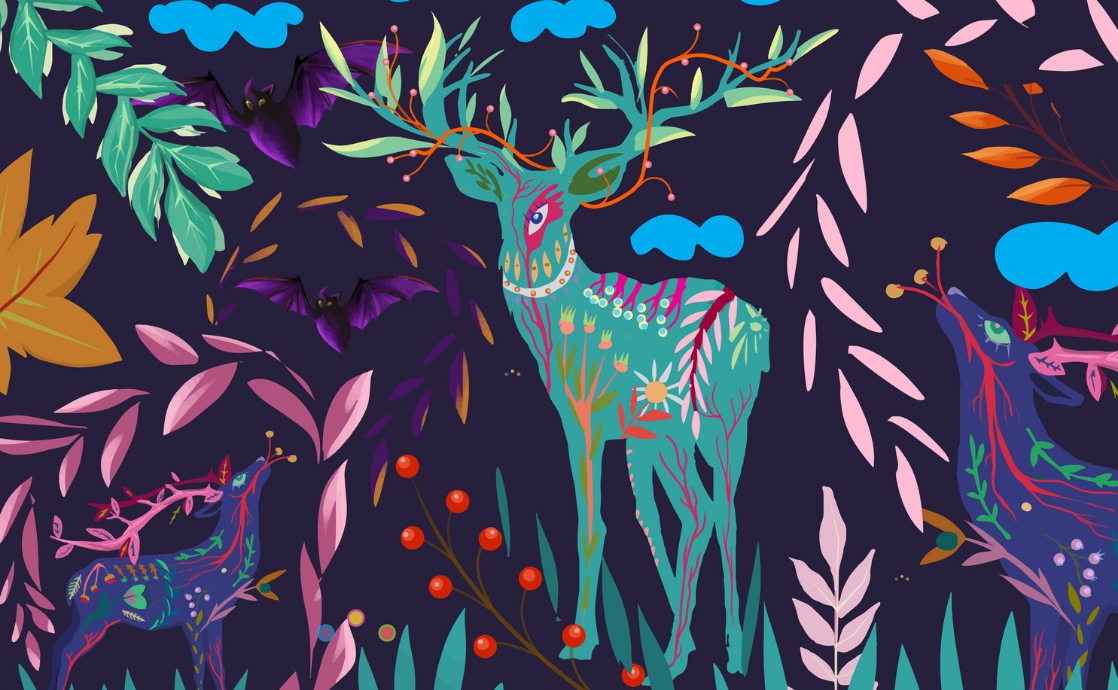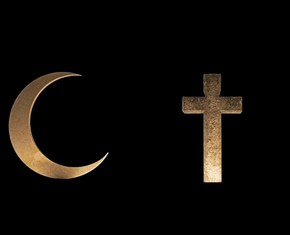The views expressed in our content reflect individual perspectives and do not represent the authoritative views of the Baha'i Faith.
When animals talk in Indigenous narratives and sacred stories, it may puzzle some readers, who wonder whether or not Indigenous peoples think these tales should be taken literally.
We raise this issue in case some find the idea of talking animals a little far-fetched, and to promote the understanding and the beautiful symbolism of the Indigenous stories and tales that feature animals.
Of course, many Western and European traditions have very similar counterparts in their original fables, tales, and mythical stories. Greek mythology, for example, is filled with animals that have magical powers – griffins, harpies, and Aethon, the eagle that torments Prometheus. Aesop’s fables, also from ancient Greece, are replete with talking animals. Some of the great Western literature – Moby Dick and Gulliver’s Travels and Ulysses, to name just a few – feature highly symbolic anthropomorphized animals.
RELATED: The Search for Truth: Finding Marumda
Much sacred literature and scripture also contains symbolic animals, as in this famed passage from Isaiah: “The wolf and the lamb will feed together, and the lion will eat straw like the ox, but the food of the serpent will be dust. They will neither harm nor destroy on all My holy mountain,” says the Lord.”
The Baha’i teachings explain this use of animal symbolism in this passage from Abdu’l-Baha’s Some Answered Questions:
… these [Biblical] verses apply word for word to Baha’u’llah. Moreover, in this wondrous Dispensation the earth will become another earth, and the world of humanity will be arrayed with perfect composure and adornment. … Strong and weak, rich and poor, contending kindreds and hostile nations – which are like the wolf and the lamb, the leopard and the kid, the lion and the calf – will treat one another with the utmost love, unity, justice, and equity.
It’s probably hard to say one way or the other universally — but there does seem to be evidence that, in the Dakota traditions at least, such talking-animal narratives are not to be taken literally.
So the idea that there was a point in time when “people were real people” and “animals were real animals” represents a turning-point in the transformation of very old Indigenous narratives. In an earlier episode of this series, we quoted the anthropologist Edwin Loeb, who wrote in The American Anthropologist journal:
After Marumda had destroyed as much as he desired, he took away from the people the power of changing their forms. From that time on the people were real people, and could no longer become animals; the animals were real animals, and could no longer become people.
Q: I have just read, with great interest, the following 2017 Literary Universals Project article by Michelle Scalise Sugiyama from the Department of Anthropology at the University of Oregon: “Distant Time: A Possible Typological Literary Universal.”
An “evolutionary psychologist/anthropologist who specializes in symbolic and aesthetic behavior,” Dr. Scalise Sugiyama “investigates the origins of these behaviors — specifically, the selection pressures that led to their emergence, the role they played in ancestral human societies, and the design features of the mind that make them possible.” “To this end,” moreover, “her work integrates cognitive and developmental psychology, evolutionary biology, hunter-gatherer studies, art history, folklore, and literary study.” Dr. Scalise Sugiyama writes, in part:
Many foraging peoples categorize their stories according to whether they are set during Distant Time or the recent past (Table 1). For example, the Teton-Dakota Sioux divide their stories into those that are true and those that are “not to be believed,” the latter of which “are a sort of hang-over … from a very, very remote past, from a different age, even from a different order of beings from ourselves” (Deloria 1932: ix). … One way in which Distant Time typically differs from present time is that the boundary between humans and other life forms is fluid (Table 1). This is expressed in slightly different ways across cultures, but the basic idea is that “animals were like people” (Erdoes & Ortiz 1998:12) or “animals were people and people were animals” (Reichard 1947:14). … A common corollary of this belief is that, in the Distant Time, animals and humans could understand one another. …
Another component of the Distant Time complex is the belief that, at some point in the past, the world was transformed into its current state. This is often referred to as the transformation period, or simply the Transformation. During this era of world change, an ancestral being or beings traveled throughout the land and, in the course of their daily activities, created land formations, deposited resources, and made other modifications that characterize the physical environment of the present time (e.g., Napaljarri & Cataldi 1994:xvii). – Michelle Scalise Sugiyama (Department of Anthropology, University of Oregon), “Distant Time: A Possible Typological Literary Universal,” Literary Universals Project (2017),
Kevin, since you are from the Lakota tradition, I decided to see what Ella Deloria (1889–1971) had to say. Born and raised on the Standing Rock Reservation, Ella Deloria was one of the first Indigenous scholars of linguistics and ethnography in the United States. Here’s her introductory comment from Dakota Texts on animals and humans talking in these Dakota “tales”:
The following Teton-Dakota … tales from the Standing Rock, Pine Ridge and Rosebud reservations in South Dakota, were written down in the original, directly from story-tellers who related them to me. … They are intended to amuse and entertain, but not to be believed. … They may be narrated only after sunset. … To our minds, they are a sort of hang-over, so to speak, from a very, very remote past, from a different age, even from an order of beings different from ourselves. These tales, in which generally some mythological character like Iktomi, Iya, the Crazy Bull, the Witch, or Waziya (the Cold), takes part together with human beings, are part of the common literary stock of the people. Constant allusion is made to them; similes are drawn from them which every intelligent adult is sure to understand. … “He is playing Iktomi” is understood to mean that a person is posing as a very agreeable fellow, simply to get what he wants.
RELATED: Kuksu and Marumda: What Defines an Indigenous Holy Messenger?
So, Kevin, in light of Ella Deloria’s above remarks, would you agree that these Dakota “tales” — as a carryover “from a very, very remote past, from a different age” — thereby fit nicely into the “Distant Time” category?
In other words, can you offer our readers some guidelines and advice as to how to read and understand and appreciate Indigenous narratives in which animals are talking?
Another reason I ask is that some of the possible Indigenous messengers of God are represented as talking animals. Would you please comment – and possibly give some examples as well?
A: Yes, the ohúŋkakaŋ wóyakapi — mythical storytelling tradition — has unique rules regarding the telling of these time-honored, timely, yet timely edifying stories, usually at night and in the winter months.
Frances Densmore’s classic, Teton Sioux Music — which you and I have mentioned several times before throughout this series — is an especially fabulous document describing, in precise detail, the sacred and dynamic relationship between animals and humans and exactly how the two should ideally interact. Many of the Lakota songs recorded in this project are from the voices of the transcendent spirit of the animal relatives, expressed in terms that we, as human “two-legged” creatures, can understand. This relationship with the natural world is one of the key provisions of the sacred “covenant” of White Buffalo Calf Woman and is more fully explicated in the text of Teton Sioux Music.
Q: So “Distant Time” may help us understand how and why some of the possible Indigenous messengers of God are represented as talking animals. One example is “Raven.” The topic of the Indigenous messenger of God, known as “the Raven,” is very timely, and is now a matter of public interest. Here’s why: on July 30, 2021, at the Sealaska Heritage Institute, the U.S. Postal Service issued the “Raven Story” stamp. The Postal Service’s press release briefly explained what this iconic “Raven” image represents — and honors:
The stamp design depicts a raven just as he escapes from his human family and begins to transform back into his bird form. … The stamp is inspired by the traditional story of the raven setting the sun, moon and stars free. It depicts one of many stories about the raven, a figure of great significance to the Indigenous people of the northern Northwest Coast, part of the area that ranges from Southeast Alaska through coastal British Columbia and south into Washington state.
Related to this, the creation story in the Book of Genesis features a talking snake, beginning with this verse:
Now the serpent was more cunning than any beast of the field which the Lord God had made. And he said to the woman, “Has God indeed said, ‘You shall not eat of every tree of the garden’?”
In Some Answered Questions, Abdu’l-Baha explained: “The meaning of the serpent is attachment to the material world.”
So the theory of “Distant Time” helps us understand why there’s a talking snake in one of the oldest narratives in the Holy Bible. “Distant Time” also goes far in explaining why talking animals take part in many Indigenous sacred traditions. This fact, however, should not be taken to mean that traditions about certain Indigenous messengers of God, in which there are talking animals, are necessarily false. Although such traditions may be contrary to literal fact as we understand it today, such narratives may be understood and appreciated as symbolism that guides us toward a higher level of meaning.

















Comments
Sign in or create an account
Continue with Googleor